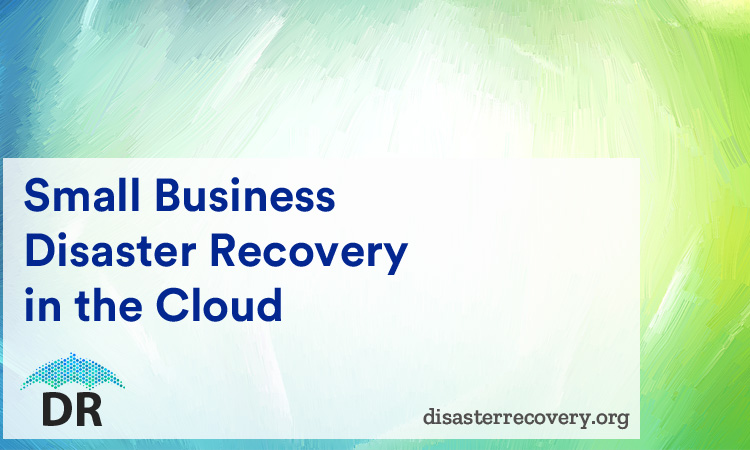When cloud computing hit the IT scene several years ago, costs made it the preserve of large organizations. However, in recent years, due to the multiplicity of service providers, the price of services has dropped to record lows. This makes it an attractive proposition for Small Business Disaster Recovery in the Cloud.
Small Business Disaster Recovery in the Cloud

To understand how a small business should go about organizing its disaster recovery in the cloud, it is important to understand the concept of Disaster Recovery, more so because most small businesses tend to mistakenly equate it with data back-up. It is much more than that.
Disaster Recovery is a part of the larger plan of Business Continuity. When a disaster strikes, production will halt and so what Disaster Recovery does is to recover the data backed up, restart affected hard ware, ensure that the necessary staff to man critical operations are available and restore production to near pre-disaster levels. Once production has re-started, then the Business Continuity part of the plan will start and business operations are restored to normal.
The advantage of Small Business Disaster Recovery in the Cloud concept is that you have all your data backed up in the cloud, which can be accessed, subject to having the necessary equipment and staff, post disaster. What is the use of having all the backed-up data in the cloud if all the hardware is damaged and beyond use?
Recovery time using a Cloud Back-up
Since the cloud is located in a different geographical location, your data is safe. However, depending on your business needs, the Recovery Time Objective and Recovery Point Objective will be different. As a thumb rule, smaller these two metrics are, costlier will the service be.
The Recovery Time Objective or RTO is the time within which the production must be restarted or it will have an unacceptable effect on the business. The Recovery Point Objective is from what point the data has to be recovered. If even the loss of a small amount of data means loss of significant revenue, then the RTO and RPO will be small, leading to a higher cost of service.
Security Issues for Small Business Disaster Recovery in the Cloud
One of the biggest issues a small business will face is security. This is due to the fact that a third party is being used to store data. Before signing up, ensure that the service provider uses a two stage authentication process for access to data. The business should also verify the antecedents of the service provider. Check what DR procedures they use in the event the cloud itself faces a disaster. Due diligence cannot be understated at any cost.
Since cloud service providers only charge for the services you use, you can use only those services needed for Business Continuity and Disaster Recovery. This will bring down the cost drastically. If you have a spike in data flow, the cloud can easily handle this surge by scaling up the services at a moments notice.
Training
For Small Business Disaster Recovery in the Cloud to work as intended, staff should be adequately trained. They should know what roles and duties are assigned to them when a disaster strikes and the switchover should be smoothly achieved. The Disaster Recovery plan should be tested by simulating exercises. As time goes by, business needs too will vary and the DR plan should be updated accordingly.
Small Business Disaster Recovery in the Cloud is a very good DR solution for small businesses and IT Managers of small businesses should give it serious consideration.

